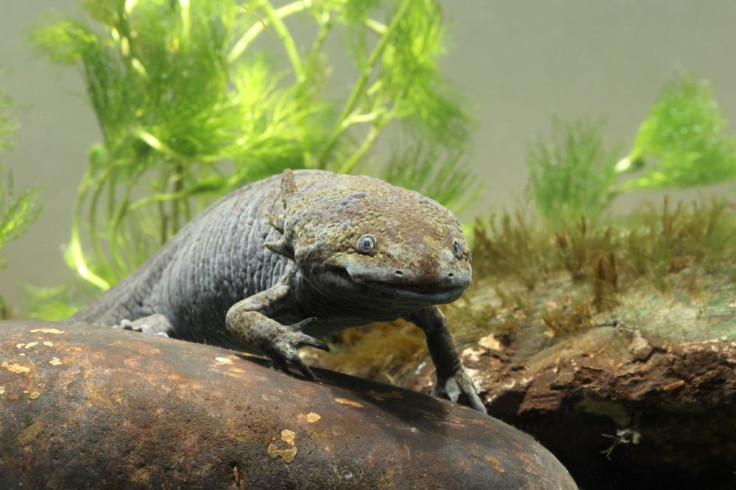
Earlier this year, Mexican salamander-like creature, the axolotl (pronounced ACK-suh-LAH-tuhl) was effectively extinct in its natural habitat, as the species was not spotted in its natural environment in a while. But new reports claim that researchers have spotted a few in Mexico City's lakes.
"We weren't able to capture them ... because the behavior of the axolotl makes them very difficult to capture," said Armando Tovar Garza, of Mexico's National Autonomous University, to the Associated Press. "We haven't had any captures, but we have had two sightings. That's important, because it tells us we still have a chance."
Colloquially known as the "water monster" and the "Mexican walking fish," the axolotl resides in the Xochimilco network of lakes and canals in Mexico. While the creature is currently not extinct, the species is at risk of extinction as it has seemingly disappeared from nature. And while there are axolotls still living in aquariums and research labs, their odds of carrying on the species are slim due to interbreeding and other risk factors. A close relative of the tiger salamander, the species suffered a declining population due to the draining and contamination of water in its natural habitat coupled with the fact that roasted axolotl is considered to be a delicacy in Mexico. In a statement, the Mexican Academy of Sciences revealed that there were 6,000 axolotls per square kilometer in 1998, 1,000 axolotls per square kilometer in 2003, and a mere 100 axolotls per square kilometer in 2008.
Researchers have taken steps to protect the dwindling axolotl population by creating axolotl "shelters" in Xochimilco over the past few years. An area is selected where rocks and reedy plants are placed to serve as filters and cleaner water is pumped in to create a better living situation. The goal of the shelters are to create a sanctuary for the axolotl where they don't have to compete for food with non-native Asian carp and African tilapia, two breeds of non-native fish that entered the lake's ecosystem years ago and have the same dietary preferences as the axolotls.
Axolotls are notorious for being "ugly" creatures, boasting odd-looking gills, a slimy tail, a wide head, lidless eyes and an overall strange appearance. The "water monster" can grow up to a foot long and have four feet which are used to walk at the bottom of lakes or to swim like alligators. The carnivorous amphibian feasts on aquatic insects, small fish and crustaceans. Axolotls have the ability to regenerate lost body parts, reports the National Geographic, and as such, they are one of the most scientifically studied salamanders in the world. Millions of axolotls are said to have lived in the lakes of Xochimilco and Chalco and according to legend, Xolotl -- the Aztec dog-headed god of death, fire, sickness and deformities -- changed into an axolotl and fled into the lake fearing death.
© 2025 Latin Times. All rights reserved. Do not reproduce without permission.




